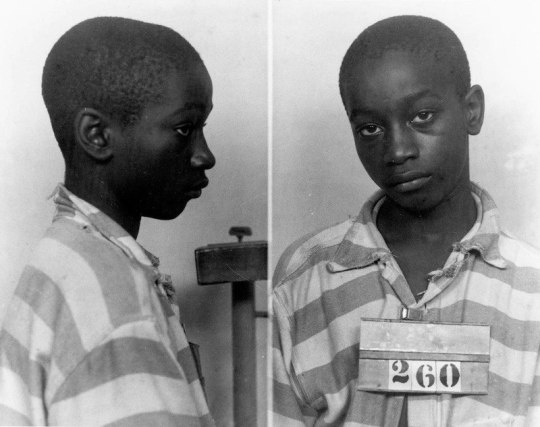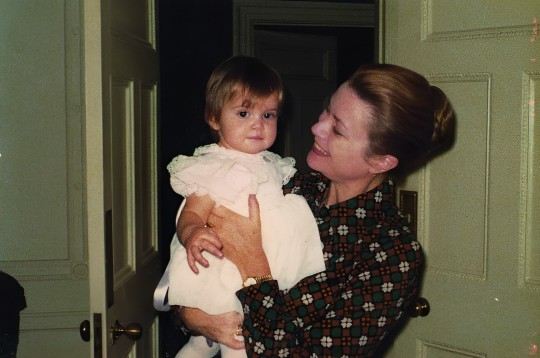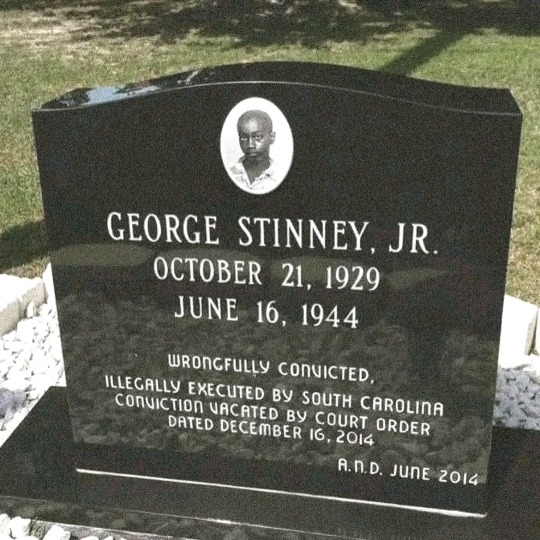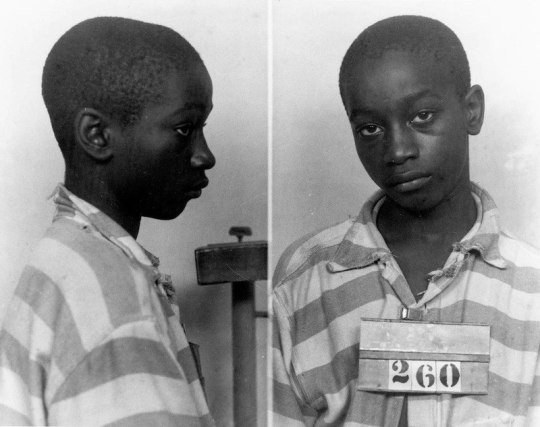#George Stinney
Explore tagged Tumblr posts
Text

In March 1944, 14-year-old George Stinney was accused of the brutal murder of two white girls, 11-year-old Betty June Binnicker and 7-year-old Mary Emma Thames. The girls had been found dead in a ditch near their homes in Alcolu, South Carolina, and Stinney was quickly apprehended and charged. The accusations against him were heavily influenced by the racially charged atmosphere of the time.
Stinney’s trial, which was held on April 24, 1944, was infamously swift. He was tried in a court that lasted less than three hours, and the jury took just ten minutes to convict him. The proceedings were marred by a lack of proper legal representation, as Stinney’s defence was minimal and inadequate. The legal system failed him comprehensively, and the trial was conducted with a glaring disregard for due process and fair trial standards.
George Stinney was sentenced to death, and his execution by electrocution took place on June 16, 1944. At just 14 years old, Stinney was one of the youngest individuals ever executed in the U.S. His execution was carried out despite widespread calls for clemency and the absence of substantial evidence linking him to the crime. He was too short to properly fit in the electric chair, and a bible was used as a booster.
For decades, the case of George Stinney remained a tragic footnote in American history. It wasn't until 2014, more than 70 years after his execution, that his conviction was posthumously overturned. The South Carolina Circuit Judge Carmen Mullen declared that Stinney’s trial was fundamentally flawed, marked by procedural errors, racial bias, and a denial of fair legal representation.
36 notes
·
View notes
Text

George Stinney: Youngest Execution in America at aged 11
In 1944, George Stinney stood 5 feet 1 inch (154 cm), and weighed 90-95 pounds. He lived in a small home with a chicken coop in his hometown of Alcolu, South Carolina. . Alcolu was a small, working-class mill town, where white and black neighborhoods were separated by railroad tracks. The town was typical of small Southern towns of the time. Given segregated schools and churches for white and black residents, there was limited interaction between them.
On March 23, 1944, the bodies of Betty June Binnicker and Mary Emma Thames were found in a ditch on the African-American side of Alcolu after the girls failed to return home the night before. Stinney's father assisted in the search. The girls had been beaten with a weapon, variously reported as a piece of blunt metal or a railroad spike. Binnicker and Thames both suffered severe blunt force trauma, resulting in penetration of both girls' skulls. According to a report by the medical examiner, these wounds had been "inflicted by a blunt instrument with a round head, about the size of a hammer." The medical examiner reported no evidence of sexual assault to the younger girl, though the genitalia of the older girl were slightly bruised.
The girls were last seen riding their bicycles looking for flowers. As they passed the Stinneys' property, they had asked Stinney and his sister, Aimé, if they knew where to find "maypops", a local name for passionflowers. According to Aimé, she was with Stinney at the time the police later established the murders occurred. According to an article reported by the wire services on March 24, 1944, the sheriff announced the arrest of "George Junius" and stated that the boy had confessed and led officers to "a hidden piece of iron.
George and his older brother John were arrested on suspicion of murdering the girls. John was released by police, but George was held in custody. He was not allowed to see his parents until after his trial and conviction.
In 1995, Stinney's seventh-grade teacher, W.L. Hamilton— a black man— spoke in an interview with The Sumter Item about George. Hamilton stated, "I remember the day he killed those children, he got into a fight with a girl at school who was his neighbor. In those days you didn't have to worry about children carrying guns and knives to school, but George carried a little knife and he scratched this child with his knife. I took him outside and we went for a little walk, and I talked to him. We went back into the school, in a submissive way, he begged for the child's pardon." Stinney's sister, Aimé Ruffner, denied those allegations and contacted Hamilton after it was published. Aimé stated, "I asked him why he would say something like that," she said. "He told me someone paid him to say it. I don't know who paid him but his exact words were, 'because they paid me.'" Hamilton died shortly after his interview was published.
Following Stinney's arrest, his father was fired from his job at the local sawmill and the Stinney family had to immediately vacate their company housing. The family feared for their safety. Stinney's parents did not see him again before the trial. He had no support during his 81-day confinement and trial; he was detained at a jail in Columbia, 50 miles (80 km) from Alcolu, due to the risk of lynching. Stinney was questioned alone, without his parents or an attorney.
Other than the testimony of the three police officers, at trial prosecutors called three witnesses: Reverend Francis Batson, who discovered the bodies of the two girls, and the two doctors who performed the post-mortem examination. The court allowed discussion of the "possibility" of rape due to bruising on Binnicker's genitalia. Stinney's counsel did not call any witnesses, did not cross-examine witnesses, and offered little or no defense. The trial presentation lasted two and a half hours. More than 1,000 white Americans crowded the courtroom, but no black Americans were allowed. As was typical at the time, Stinney was tried before an all-white jury. After deliberating for less than ten minutes, the jury found Stinney guilty of murder. Judge Philip H. Stoll sentenced Stinney to death by electrocution.
Stinney's family, churches, and the NAACP appealed to Governor Olin D. Johnston for clemency, given the age of the boy. Most of the pleas for clemency came from white women living in South Carolina. Some pleas from whites came with affirmations of white supremacy, but discomfort at the prospect of someone so young being executed.
An execution of a child as young as 14 was virtually unheard of in United States history, even for black children in the Jim Crow South who were convicted of murdering or raping white victims; many sources say that Stinney was the youngest person executed in the US in the 20th century.
Stinney was executed on Friday, June 16, 1944, at 7:30 a.m. He was prepared for execution by electric chair, using a Bible as a booster seat because Stinney was too small for the chair. He was then restrained by his arms, legs, and body to the chair. An officer asked George if he had any last words to say before the execution took place, but he only shook his head and said "No, sir." The executioner pulled a strap from the chair and placed it over George's mouth, causing him to break into tears, and he then placed the face mask over his face, which did not fit him as he continued sobbing. When the lethal electricity was applied, the mask covering slipped off, revealing tears streaming down Stinney's face. He was buried in an unmarked grave in Crowley
20 notes
·
View notes
Text
up there for the "most annoying (i.e. sickening) Twitter trend" is bluechecks attempting to re-litigate three specific long-ago crimes every few months
Leo Frank, George Stinney, and Emmett Till. I like to think there isn't much that actually gets my goat online anymore but watching some doughy asshole who writes for a conservative dark-money blog vehemently argue that the show trial and execution of a child was actually some kind of victory for Law and Order, or watching so-called "historians" excuse the lynching of Leo Frank because of "moral failings" while seeming to grudgingly admit that race played a factor in any of these cases really does cause a particular kind of cold hatred on my end.
13 notes
·
View notes
Text




Princess Grace of Monaco was the godmother of the late Milica Kastner, daughter of her friends, producer George Stinney and interior designer Tessa Kennedy.
Top photo: Telegram from Princess Grace to Tessa congratulating the birth of Mallica dated January 21, 1972 "so delighted over happy news much love and good wishes to you and baby Milica".
Second photos: Baby Milica in 1972 (left) and on the right a photo of Tessa Kennedy in the late 60s/early 70s.
Third photo: Princess Grace holding her goddaughter Milica in London circa 1973.
Milica Kastner sadly passed away in 2020 after a long battle against two stage 4 cancers. R.I.P
#GRACE KELLY#princess grace#memorabilia#milica kastner#tessa kennedy#george stinney#telegram#1972#1973#handwritten
7 notes
·
View notes
Text
Uncovering a Tragedy: Meet George Stinney Jr., an innocent life snatched by the US at the age of 14.


At just 14, George Stinney Jr., an African American boy, faced an unjust fate. He was wrongly convicted and executed for the murders of two young white girls in 1944, later proven to be an unfair trial.
Stinney's conviction and death sentence by electric chair made him the youngest American in the 20th century to be executed with an exact birth date. The trial, lasting only 2 hours, had an all-white jury and denied his parents entry to the courtroom.
Throughout the trial, George Stinney Jr. steadfastly maintained his innocence, clutching a Bible in his hands. To make him fit the electric chair, they used the very Bible he held as a booster seat. An unimaginable injustice.
Executing Stinney with 5,380 volts, the truth of his innocence remained buried for 70 years until a South Carolina judge finally exonerated him. The murder weapon's weight, over 19.07 kilograms, made it physically impossible for Stinney to wield it.
George Stinney Jr.'s tragic story inspired Stephen King's "The Green Mile," shedding light on the deep-rooted flaws in the justice system. May we never forget this innocent life taken too soon.
#george stinney jr#the story of George Stinney Jr#the green mile#usa government#sad stories#usa politics#this is america#the history#june 16 1944#march 1944#the 20th century#south carolina
19 notes
·
View notes
Text
“After some reflection and consulting with colleagues to be sure, unfortunately this is not a topic I can approve. Although I do encourage students to select topics they are interested in since it can help with nervousness and the willingness to give the speech, there is still a level of seriousness you should strive for with your topic.”
I was going to talk about why chickens cross roads, but you’ve forced my hand, professor. I will now be discussing the tragic execution of George Stinney Jr. because there aren’t many things I can easily talk about. Have fun learning your history that I bet you didn’t know.
2 notes
·
View notes
Text

Never forget! George Stinney Jr. was a 14-year-old African American boy who became a symbol of racial injustice in the United States. In March 1944, he was accused of the murder of two white girls, Betty June Binnicker and Mary Emma Thames, in his hometown of Alcolu, South Carolina. The case against him was built on dubious evidence, with the primary testimony being coerced and lacking any physical proof linking him to the crime.
Stinney was arrested, tried, and convicted in a matter of hours, with an all-white jury deliberating for only about ten minutes before reaching a guilty verdict. His trial was marked by deep racial biases and injustices prevalent in the Jim Crow South. He was sentenced to death and executed in June 1944, making him one of the youngest people ever to be executed in the United States.
Decades later, in 2014, Stinney’s conviction was posthumously overturned by a South Carolina judge, who ruled that the trial had been deeply flawed and that his constitutional rights had been violated His story continues to be a stark reminder of the systemic racism and injustices that have historically plagued the American legal system.

George Stinney Jr. (second from right) being led to the execution chamber. Due to his small stature, these white devils even used a Bible as a booster seat to properly position him in the chair.

Rest in Paradise George Stinney Jr ✊🏼✊🏽✊🏾✊🏿🔴⚫️🟢
#black people#black#pan africanism#black tumblr#black history#blacktumblr#black conscious#africa#racial injustice#racisim#antiblackness#anti black#anti blackness#george Stinney Jr#black child#wrongfully#black american#african american
304 notes
·
View notes
Text
...no words!
.
143 notes
·
View notes
Text
youtube
On June 16, 1944, George Stinney Jr., a 90-pound, 14-year-old boy, was executed in the electric chair in Columbia, South Carolina. He remains the youngest person executed in the U.S. in the 20th century. Learn more about this injustice: https://calendar.eji.org/racial-injus...
On June 16, 1944, George Stinney Jr., a 90-pound Black 14-year-old boy, was executed in the electric chair in Columbia, South Carolina. Three months earlier, on March 24, George and his sister were playing in their yard when two young white girls briefly approached and asked where they could find flowers. Hours later, the girls failed to return home, and a search party was organized to find them. George joined the search party and casually mentioned to a bystander that he had seen the girls earlier. The following morning, their dead bodies were found in a shallow ditch.
George was immediately arrested for the murders and subjected to hours of interrogation without his parents or an attorney. The sheriff later claimed that George confessed to the murders, though no written or signed statement was presented. George's father was fired from his job, and his family was forced to flee amidst threats on their lives. On March 26, a mob attempted to lynch George, but he had already been moved to an out-of-town jail.
On April 24, George Stinney faced a sham trial virtually alone. No African Americans were allowed inside the courthouse, and his court-appointed attorney, a tax lawyer with political aspirations, failed to call a single witness. The prosecution presented the sheriff's testimony regarding George's alleged confession as the only evidence of his guilt. An all-white jury deliberated for 10 minutes before convicting George Stinney of murder, and the judge promptly sentenced the 14-year-old to death. Despite appeals from Black advocacy groups, Governor Olin Johnston refused to intervene. George Stinney remains the youngest person executed in the U.S. in the 20th century.
Seventy years later, a South Carolina judge held a two-day hearing, which included testimony from three of George’s surviving siblings, members of the search party, and several experts. The state argued at the hearing that—despite all the unfairness in this case—George’s conviction should stand. The trial court disagreed and vacated the conviction, finding that George Stinney was fundamentally deprived of due process throughout the proceedings against him, that the alleged confession “simply cannot be said to be known and voluntary,” that the court-appointed attorney “did little to nothing” to defend George, and that his representation was “the essence of being ineffective.” The judge concluded: “I can think of no greater injustice.” Learn more here.
#history#white history#us history#Black history#George Stinney Jr.#am yisrael chai#jumblr#republicans#democrats#child#black child#black boy#boy#Youtube
1 note
·
View note
Photo

George Junius Stinney, Jr., a 14-year-old African American boy, was the youngest person ever to be executed in the United States during the 20th century.
On 16 June, 1944, guards led him to the electric chair at a South Carolina prison. George, who stood at only 5'1" and and weighed 95 pounds, had to sit on a Bible to fit into the adult-sized electric chair. The straps did not fit him, and an electrode was too big for his leg, but he was electrocuted anyway. Witnesses recoiled in horror as the death mask fell from his face, and tears streamed from his eyes.
George was accused of killing two young white girls, 11-year-old Betty June Binnicker and 8-year-old Mary Emma Thames. They were beaten with a railroad spike and dragged to a ditch near Acolu, about five miles from Manning, in central South Carolina. The girls' bodies were found a day after they disappeared, and George was arrested a few hours later when white men in suits came to take him away.
Due to the risk of a lynching, George was held at a jail 50 miles away from his home in Columbia, South Carolina. His father, who had helped search for the missing girls, was fired from his job and ordered to leave his home and workplace. George's family were also told to leave town prior to the trial to avoid further retribution. The courthouse was filled with an atmosphere of lynch mob hysteria during the trial. Without any family visits, the 14-year-old had to endure the trial and death alone.
The trial was found to have been unfair and racially motivated, with no real evidence linking George Stinney to the crime. His conviction was eventually posthumously pardoned 70 years after his execution on December 17, 2014. .
71 notes
·
View notes
Text
rip george stinney jr, today in 1944 you were wrongfully killed at age 14. we wont forget u
#female hysteria#female manipulator#girlblogging#femcel#gaslight gatekeep girlboss#female rage#lana del rey#lizzie grant#manic pixie dream girl#lizzy grant#blm#george stinney jr
1 note
·
View note
Text
Doing research for my project and the way my tears are getting in the way
#I'm trying to get into the history of racism in the US#And how it affects children (there's more to the project)#I'm reading about George Stinney#'using a Bible as a booster seat because Stinney was too small for the chair'#the emotions I am feeling run back centuries
0 notes
Text

Bishop Talbert Swan
@TalbertSwan on X
White people have mass murdered Black people and burned entire Black towns like Rosewood, Florida and Tulsa, Oklahoma over false accusations of offending white women. Emmett Till was lynched over a false allegation of whistling at a white woman. George Stinney was executed at 14 years old over false accusations of killing two white girls. Five Black teens were unjustly imprisoned over false accusations of raping a white woman jogging in Central Park. Black men have been unjustly, profiled, arrested, prosecuted, imprisoned, and even murdered over false accusations of harming white women. There are four white women on the Olympic women’s basketball team. But somehow Caitlyn Clark is a victim of RACISM?
Note: Angel Resse wasn't selected either so how the Fvck can this be racist?🙄🙄🙄🙄🙄🙄
21 notes
·
View notes
Text
things that you probably didn't think to add to your void list (that don't have to do with necessarily improving your life, but the life's of others)
george stinney was never falsely accused of murder and the 2 girls (Betty June Binnicker and Emma Thames) were never murdered. (George stinney was only 14 when he was falsely accused of murder. due to the racist prejudice system he was executed by electric chair, him, being so small had to sit on a Bible just to be able to get electrocuted. if you want to see what an electric chair does to somebody, watch this video , it's just a video of a mannequin but still, they did that to a little boy due to his skin color.)
complete revision of Jeffrey dahmer. like i have in my script that he never existed.
revision of the death of Brianna Taylor, i also added affirmations for her to just thrive in life
revision of the death of George Floyd, also added affirmations for him to just thrive in life
complete revision of ted bundy, same with Jeffrey dahmer, just scripted he never existed.
complete revision of Richard ramirez
gypsy rose blanchard never going through what she did
menendez brothers never going through what they went through
reversal of all school shootings
education being more accessible and cheaper
housing being more accessible and cheaper
revision of colonization
revision of 9-11
revision of global warming and climate change
revision of the recession and housing crisis
complete revision of any historic event that took the lives of people!
remember, anything is possible! you are not bound by time
29 notes
·
View notes
Text
En el siglo XX, la persona más joven ejec...utada en Estados Unidos fue George Stinney Jr. Con sólo 14 años, fue ejecu...tad0 en la silla eléctrica. Desde el día del juicio hasta su ejec...ución, el joven sostuvo una Biblia en sus manos, proclamando constantemente su inocencia.

Stinney fue acusado de as3...sinar a dos niñas blancas. Una de las víctimas fue Betty, de 11 años, y la otra, Mary, de 7 años. Sus cuerpos fueron encontrados cerca de sus propias casas. Durante el juicio, todos los jurados eran blancos y el proceso duró sólo dos horas. Apenas 10 minutos después del juicio, se dictó la sentencia de muerte. Los padres de Stinney fueron amenazados de muerte y no se les permitió brindarle a su hijo ningún consuelo en la sala del tribunal. Posteriormente se vieron obligados a abandonar su ciudad.
George Stinney pasó 81 días en prisión antes de su muerte y nunca se le permitió ver a sus padres durante ese tiempo. Estuvo recluido en régimen de aislamiento a unos 80 kilómetros de su ciudad natal. Su eje...cución se llevó a cabo aplicando 5.380 voltios de electricidad.
Setenta años después de su muerte, un juez de Carolina del Sur demostró que George Stinney era inocente. Las dos niñas habían sido asesin...adas por una viga que pesaba más de 19 kilogramos, que a Stinney, de 14 años, le habría resultado imposible levantar, y mucho menos usar para infligir golp...3s letales. Todo el caso en su contra fue inventado y Stinney fue ata...cad0 simplemente porque era negro.
Esta trágica historia inspiró más tarde a Stephen King a escribir su novela "La milla verde". Se suele decir que la gente del pasado era más humana, pero eso es una mentira descarada. La gente era cruel entonces, tal como lo es ahora. La única diferencia es que antes la cru...eldad estaba oculta, mientras que ahora está expuesta para que todos la vean.
2 notes
·
View notes
Note
are you aware of any accurate electric chair execution scenes or videos?
In terms of movies there are:

Dead Wrong

There are many others, including several about Ted Bundy and George Stinney, but they are horribly flawed portrayals.

The George Stinney movie looks like he is being executed with a salad bowl.

The Ted Bundy films taken as a group are accurate but each is flawed in some way.......prison uniforms or chair design etc.
Question about Electric Chair Scenes
26 notes
·
View notes